Vampire: The Masquerade 5th Edition Review By Darker Days Radio
July 28, 2018 by brennon
Twenty-seven years since the game made its first appearance at GenCon and fourteen years since the “Time of Judgment” that ended the World of Darkness, Vampire the Masquerade is back. It’s been a twisting and meandering journey to where we are now, with crowd-funded 20th anniversary Editions of the classic World of Darkness, two editions of the spiritual successor game - Vampire the Requiem, an MMO that got cancelled, and White Wolf changing hands from CCP to Paradox plus the founding of Onyx Path Publishing.
Listen Now: Vampire The Masquerade 5th Edition Play Session
The new incarnation of White Wolf set out to create a new edition of the game that not only made the game accessible for a new generation of players, but which also captured the essence of the first edition of the game. The metaplot - the ongoing story of the game - has in some respects been rolled back, while also being updated and pushed forward to better reflect modern society, current events, and the mood and emotions of our current time.
A World Of Darkness
If you are new to Vampire the Masquerade, it is a tabletop roleplay game which at one time was one of the most popular games on the market, rivalling D&D, and created an environment that attracted a new demographic of roleplay gamers. In Vampire, the players take on the role of the vampires and must deal with their need to feed on blood, maintain the secrecy of their night society, and tackle the byzantine politics of their kind that has been a game for these immortals for aeons.
The life as one of the Kindred, as these vampires call themselves, in modern nights has become fraught with danger. Age old prophecies are coming to pass; “Thin Blooded” vampires are a sign of the end times - Gehenna. Ancient vampires are awakening and hungering for the blood of the children. And within the intelligence agencies and the Vatican, a new “Second Inquisition” has taken hold, striking at the vampires, causing a worldwide clampdown on Camarilla activities.
The Camarilla was once a worldwide conclave of city princes, a form of global governance and means to protect the Masquerade - the single most important rule of the Kindred, that they do not betray the secrecy of their existence to mortals. In response to the Second Inquisition and the events in Berlin (the Enlightenment In Blood LARP event in Berlin last year is critical to all of this), the Camarilla has forbidden the use of modern technology to discuss vampire matters. The Schrecknet of the Nosferatu - a form of darknet - has been mothballed, servers destroyed, and now communication between elder vampires, and to other cities, is performed by messengers and dead drops.
The Camarilla has retracted and has given over the streets to the Anarchs - the rebellious neonates. The Camarilla is now an elite circle, leaving the masses, who were once automatically members of the Camarilla, to their own devices. But that is not all. The Sabbat, the boogeyman of the Camarilla, the dark church of vampires, a cult dedicated to embodying the vampiric nature, and also their vow to destroy the founders of the vampiric clans - the Antediluvians - has vanished. Where once they were a constant threat to peace in Camarilla cities, now they are rarer than ever, their leaders and soldiers now rumoured to be in the Middle-East, fighting the Antediluvians and Camarilla elders.
With the Sabbat elsewhere, and Camarilla elders drawn away by the Beckoning, and with both sects more secretive than ever, the Anarchs, a disparate movement of various neonate vampire collectives, has moved into the power vacuum. The only rule they follow is that of the Masquerade.
Embraced
As players, you are introduced into a setting that has many truths being broken, old kings toppled, and ancient threats emerging. The core book of V5 is suited for creating games that focus on the players taking the role of newly embraced vampires, or at least vampires who were embraced in the last couple of decades. These vampires are not in positions of power. They have not had the centuries to build up their positions of control and dominance.
When building characters, players have the option of one of seven clans (there are thirteen in total, but V5 presents the main seven clans that form the Camarilla and Anarchs). These are the Brujah and Gangrel (who are have the largest presence within the Anarchs), the Nosferatu, Toreador, Tremere and Ventrue. Character creation now is not just about building your character. It is encouraged to work out how each character of the player troupe - coterie - is connected. How do they feel about each other? Do they trust each other?
Built around this the players determine the nature of the domain the characters claim - the place where the vampires hunt in order to gain blood. Furthermore, the players can define the type of coterie they are, and by conforming to this type they gain further benefits. This approach of troupe play is similar to the group templates we have seen in many RPGs in the last few years. It helps calibrate the expectations of the campaign that the players will engage in.
The Hunger Inside You
For the most part character sheets in V5 look the same as they always have done, but the main points of note are the traits Hunger and Blood Potency.
As per usual for a Storyteller game, when you need to achieve something, like hacking a computer, the player combines the rating of their relevant attribute with the relevant skill. Both of these sets of traits have ranks of 0 to 5. So, for hacking a computer, the player would use their Intelligence attribute, combined with their Computing skill. If they have a speciality in computing that is applicable, they gain an extra die to their pool. All dice used are D10s. Each die rolled contributes a success if it is a 6+. For every pair of 10s rolled contributes 4 successes - this being a critical. The difficulty of the test is rated by how many successes are needed.
Hunger is an ever-present part of being a vampire. It is a measure of how depleted a vampire is of blood. The more hungry the vampire is the higher rating of Hunger they have. Hunger ranges from 1 to 5. For each point of Hunger, a vampire character must replace one of their dice with a Hunger die. This changes the nature of criticals and failures. If a critical success occurs, and the critical is due to a 10 on the Hunger dice, this is a Messy critical. It represents the supernatural nature of the vampire coming to the fore and endangers the Masquerade. If the test fails, and a 1 is scored on a Hunger die, then a Bestial Failure is invoked. This will mean the vampire will be compelled to act according to their nature, be it the need to feed, to rage, to fall into a quiet melancholy.
Vampires, of course, have powers and the ability to boost their physical traits, and if they do there is a chance Hunger will increase. Rousing hunger requires a single die roll, and on a fail the Hunger rating increases, but the power is still activated.
For the speed of play, some tests should not be rolled, and instead, you can just “take half” of your pool and count that as successes.
In combat, most times for simplicity, a roll which we will call here a “face-to-face roll” is made. So, if two opponents are shooting at each other (Dexterity+Firearms), the character with the most successes wins, and also deals damage. Combat is catered for in a more elaborate way if combat scenes get too complex, but the basic idea is to, where possible, reduce the number of dice rolls needed.
Damage is not just taken physically. Willpower is a pool and a sort of mental health tracker. As Willpower is spent, you can reroll three dice on a test, useful if you need to stop a monstrous outburst. But social combat - aggressive banter in courts of vampires is enough to make a vampire frenzy - also causes the loss of Willpower.
Finally, we still have Humanity. This is a trait that measures how well a vampire adheres to morals and philosophies that reinforces their human nature and keeps at bay the Beast - their animalistic, blood-mad nature. In the new edition, Humanity is further developed to include traits that attaches a vampire to the mortal world around them. These are called Convictions, and attached to each is a Touchstone - a living person that the vampire cares for or is interested in that represents their Conviction.
Should I Buy A Coffin?
So what is the hot take here?
I got into Vampire the Masquerade with the revised edition in 1998. It was great, but as a young adult at the time of the millennium, and my formative years being just after Y2K, Vampire the Requiem spoke more strongly to me. The world wasn’t going to end. It was more of the same, a long grinding ennui.
But in the current climate, V5 is perhaps more relevant than ever. The apocalypse has come, it has started, and it is not an end with a bang, more of a slow crumble. V5 is also doing some soft retcons here and there. These are alterations to the setting, taking advantage of unreliable narrators in previous books and editions. So, some of the more stupid ideas can be removed (tunnels under Venice…. really??!).
The rule system is compact and refreshing, with the Hunger dice a constant reminder of the state of the vampire, but not too intrusive. Hunger fluctuates at just the right rate - and rockets up when combat breaks out.
There is, of course, a tip of the hat to the Chronicles of Darkness. Humanity has been updated and borrowed some systems from Requiem. Blood Potency has been taken too. Plus combat rolls are much more simplified much like in Chronicles of Darkness.
Overall, and as a big Requiem fan, V5 gets the thumbs up from me. Of course don’t be surprised if I take things from the one game, file off the serial numbers and use it in V5 at my own table, but I feel that approach more than ever is completely valid.
For new players this is a visually modern book (it even reads well on mobile - got to love that 1.5 line spacing), that can happily sit on the coffee table, and a system that will get players of all sorts into the action quick, and a book that is far less intimidating to read through than Vampire the Masquerade 20th anniversary edition. Not all the art is going to appeal, and in many places, the art is a big departure from previous editions.
More Thoughts...
Darker Days Radio is, however, more than just one voice.
Matt: I appreciate the mechanical changes and the efforts to streamline things, and "Hunger", as opposed to a spendable power point stat, is a neat mechanical change. But thematically the game feels like it's trying to push a narrative from the early 90s and it comes across as tone deaf in its earnestness.
Chigg: Honestly, I really enjoyed the game more than I thought I was going to. Having played the alpha pre-test version I didn't really have very high hopes for V5. But the changes made to the setting, allowing for a more diverse vampiric world than the old Camarilla vs. Sabbat paradigm, the seeming shift of focus from world-spanning Machiavellian elders to more desperate street level play, and the improved character generation system and mechanics overall have moved this version of the game from ‘I'll pick it up... eventually’ to ‘buying at GenCon’ for me!
Pete: I’m very, very happy with V5. I think the streamlining of the base rules (love take half) and the new hunger mechanics add a fresh spin to classic gameplay. The ability to push your luck with it, to gamble with rousing your hunger and potentially getting lucky and remaining at a low Hunger while activating powers will lead to some great “failing forward” moments at the table. I really like just how unreliable your hunger can be, and how through very little fault of your own, you can find yourself back at Hunger 5. This is going to add some great “this plot writes itself” moments as players dig themselves deeper into trouble trying to slake their hunger.
I really like the updates to the World of Darkness. The Beckoning and Second Inquisition have disrupted the social order of the game in some very interesting ways. The new book spends a lot of time focusing on Vampire the Masquerade as a group activity and this focus on coterie purpose and composition is a really welcome addition.
The book itself isn't perfect. Initially, White Wolf stated they were looking to the Indy RPG world for inspiration, and I'd hoped this had meant smaller books, maybe digest sized for easy portability? While I love a lot of the 20th edition content, I find the tendency to release a 400-page tome tiring. These are very hard to reference on the fly and intimidating to new players.
I'd genuinely hoped White Wolf had seen what other companies have done and maybe put out smaller, easier to reference books that can be divided (let's say a setting book, a players book and a storytellers book collected in a slipcase and sold as V5 core) easily. Alas, this is not the case. V5 is 400 pages and thus, will be another weighty tome to assault your bookcase.
Also, and this may well have been corrected by the time of publishing, but the review copy we were given suffered from a plethora of copy editing and spelling mistakes. I'm a little worried that wanting to make a GenCon release date may have hurt this release.
Like Chris, I'm a massive fan of Vampire the Requiem, particularly the second edition, which I'd call a near Masterpiece. Now V5 builds on twenty-five years of Masquerade, but it’s also building on nearly fifteen years of Requiem. The influence of Requiem is throughout this book, particularly The Touchstone system which it has lifted whole cloth. In the review copy we had there was no acknowledgement of Requiem or its designers and I see this a major oversight, one that I hope is corrected, if not in the physical first release then hopefully in later print runs or books.
Those critiques aside, I'm enormously happy with V5. They've been mostly successful in what they intended to do, and I can't wait to get my players together and delve back into the World of Darkness with Vampire 5th Edition.
Mike: There’s a lot to like about V5 - slick new rules, re-balanced disciplines, and updated clans for 21st-century sensibilities. Most exciting, however, are the advances to the setting, bringing about new options for Anarch, Camarilla, Sabbat, and Thin-Blood chronicles accompanying the classic styles of play. The complete V5 experience isn’t for everyone - I can see a lot of people sticking to the familiar 20th Anniversary rules system - but there are so many powerful new concepts that every player will find something they can incorporate into a Vampire the Masquerade or Vampire the Requiem game.
"Character creation now is not just about building your character. It is encouraged to work out how each character of the player troupe - coterie - is connected..."
Supported by (Turn Off)
Supported by (Turn Off)
"There’s a lot to like about V5 - slick new rules, re-balanced disciplines, and updated clans for 21st-century sensibilities..."
Supported by (Turn Off)









































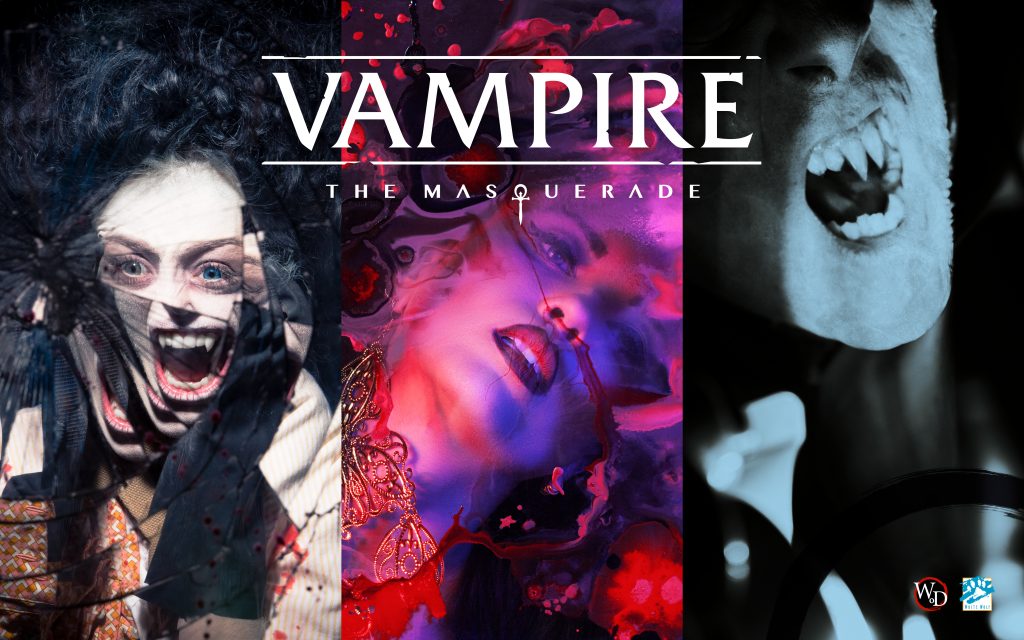
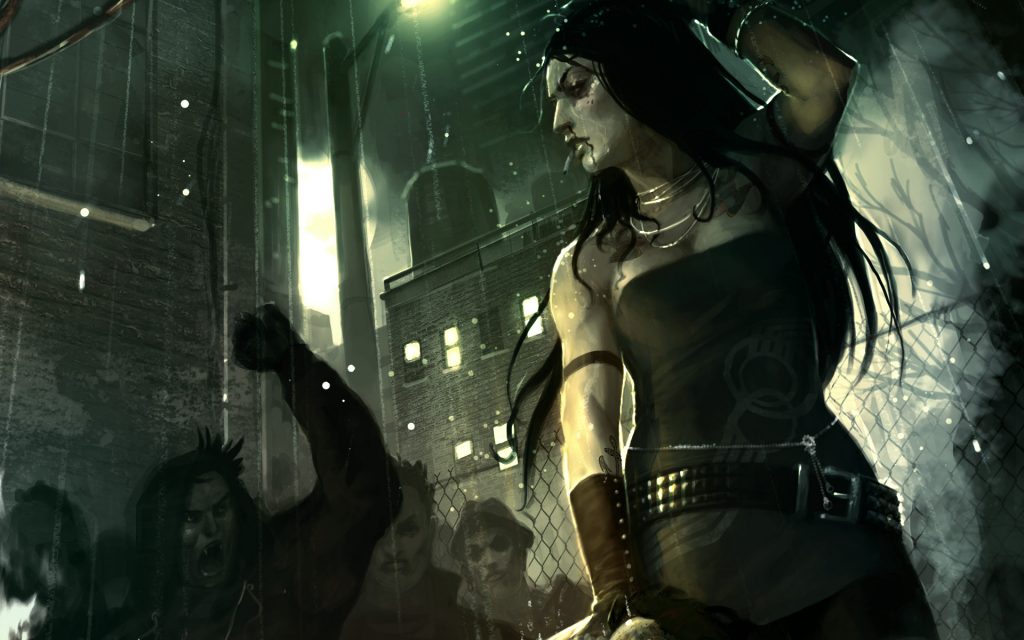
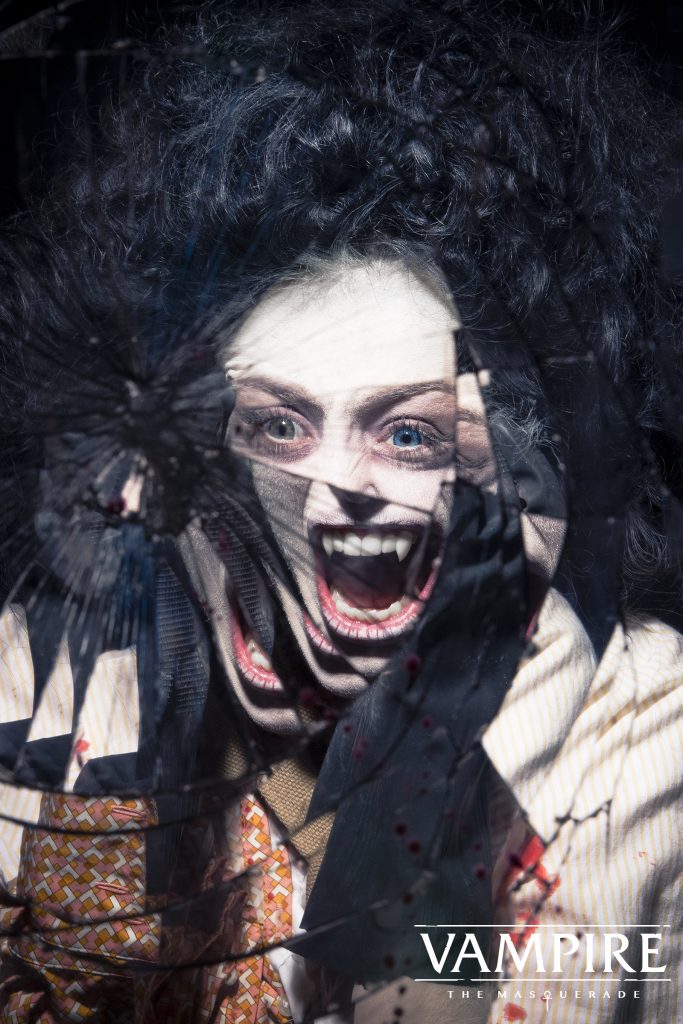
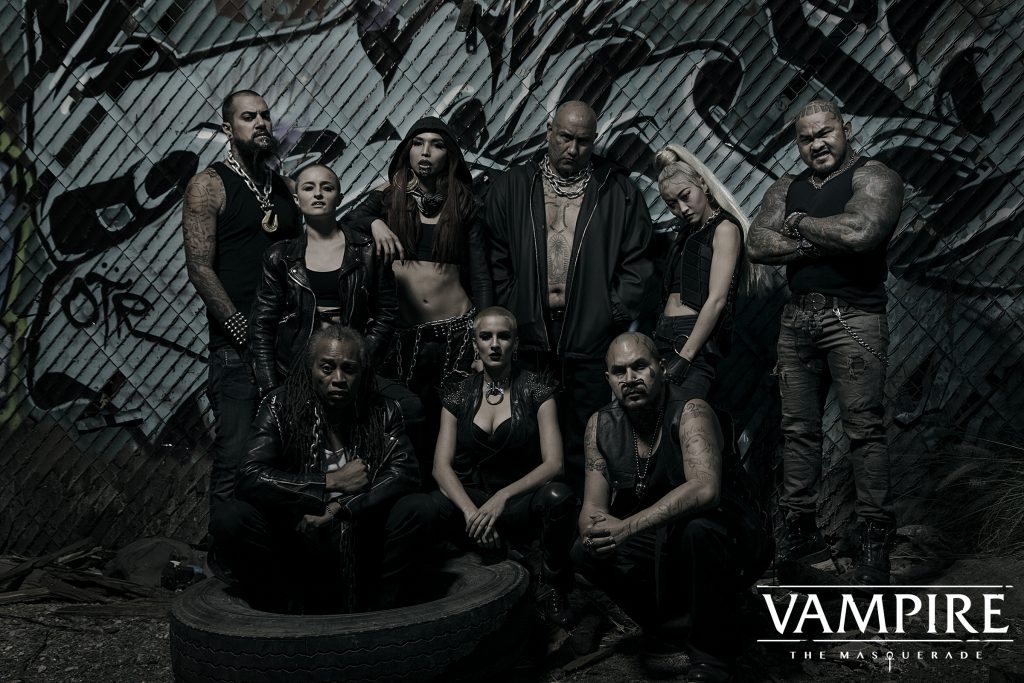




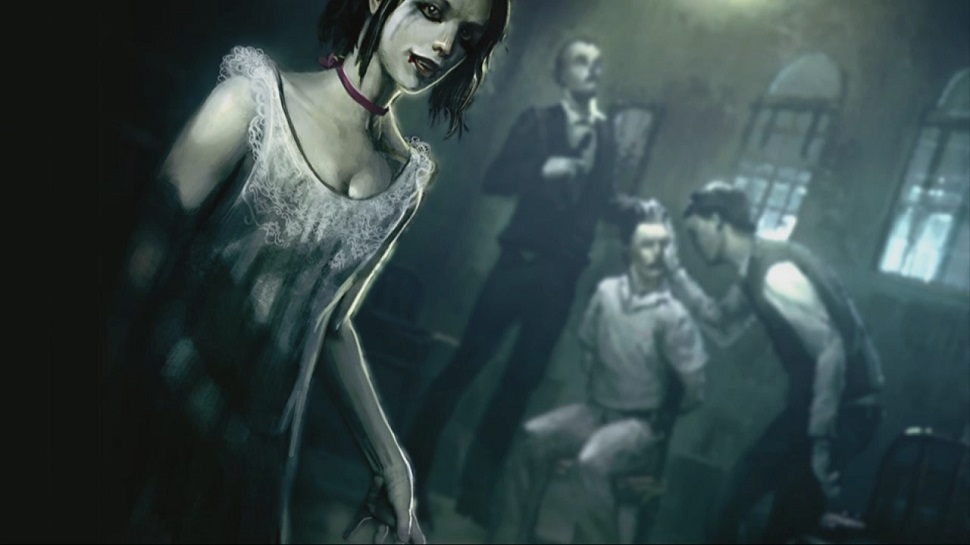
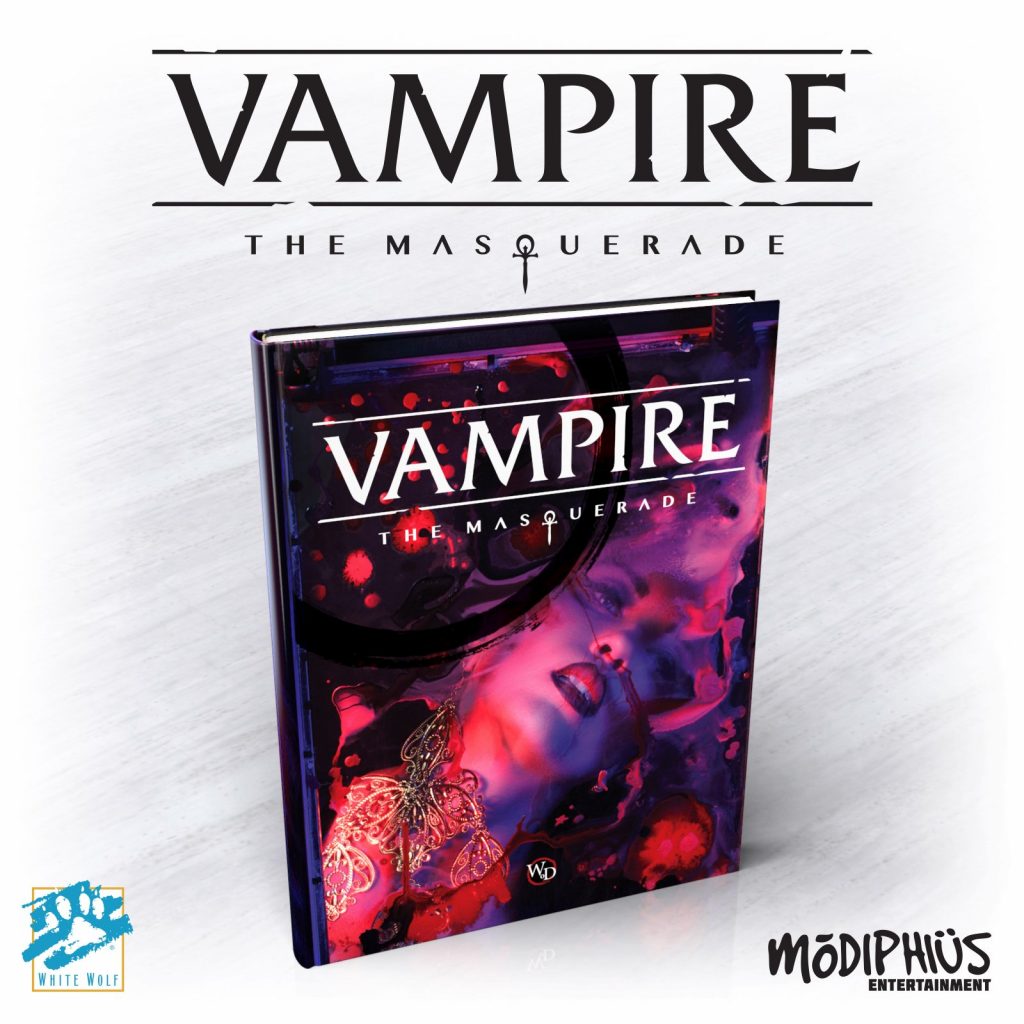


































I’m very much a Werewolf Apocalypse/Forsaken fan because…well…werewolves man, but I am very tempted to take a peek at Vampire now after this. I like the focus and the new take on the storyline that you’ve chatted about and I could see this being a very interesting option for my group as we LOVE role-playing over just combat.
You tell how story focused this game is given how often we rolled dice in the play through. 3 hours and I would say not that many dice rolls, and a lot of things resolved in a single roll.
Aye, it was fascinating listening along and just having the story unfold without too much of an interference from the mechanics.
After reading this review and hearing the play through, I think I will definitely be keeping an eye out for the book at GenCon.
Duplicate
Good review – and I’m now just waiting on the preoder copy to arrive! A couple of things: could anybody provide a list of Attributes and Abilities on the character sheet – or even a snapshot of the character sheet? Second, with regards to the criticism of Vampire: The Requiem not being credited…..you credit the creators not the games, surely, and the creators were actually the same people, thereabouts who made Vampire: The Masquerade previously?\
Strength, Dex, Stamina, Charisma Manipulation, Composure, Intelligence, Wits, Resolve
As to the game not being referenced. No, the writers of this new edition did not create either edition of Requiem. I feel the work of those who went before you should be acknowledged.
Thank you for the information – it is useful to me, and I like the new Attribute list, I think. The reference I had was actually to previous creators of Vampire: The Masquerade, not the current ones – sorry for the miscommunication. That is, the lead developer of both Vampire: The Masquerade Revised and Vampire: The Requiem (and also Vampire: The Masquerade 20th Anniversary Edition) was Justin Achilli and there was a lot of overlap in the writers/contributers of all them as they were all written by White Wolf staffers (and latterly The Onyx Path), collectively. Sure, the new edition… Read more »
You write “When building characters, players have the option of one of seven clans (there are thirteen in total, but V5 presents the main seven clans that form the Camarilla and Anarchs). These are the Brujah and Gangrel (who are have the largest presence within the Anarchs), the Nosferatu, Toreador, Tremere and Ventrue.”
You list six, What is the seventh then? Malkavians?
My mistake. Malkavians are still there.
Loved the new mechanics, lore and balance, hated the art, layout and neon, as well as the photography. Talk about keeping up with the “Masquerade”…